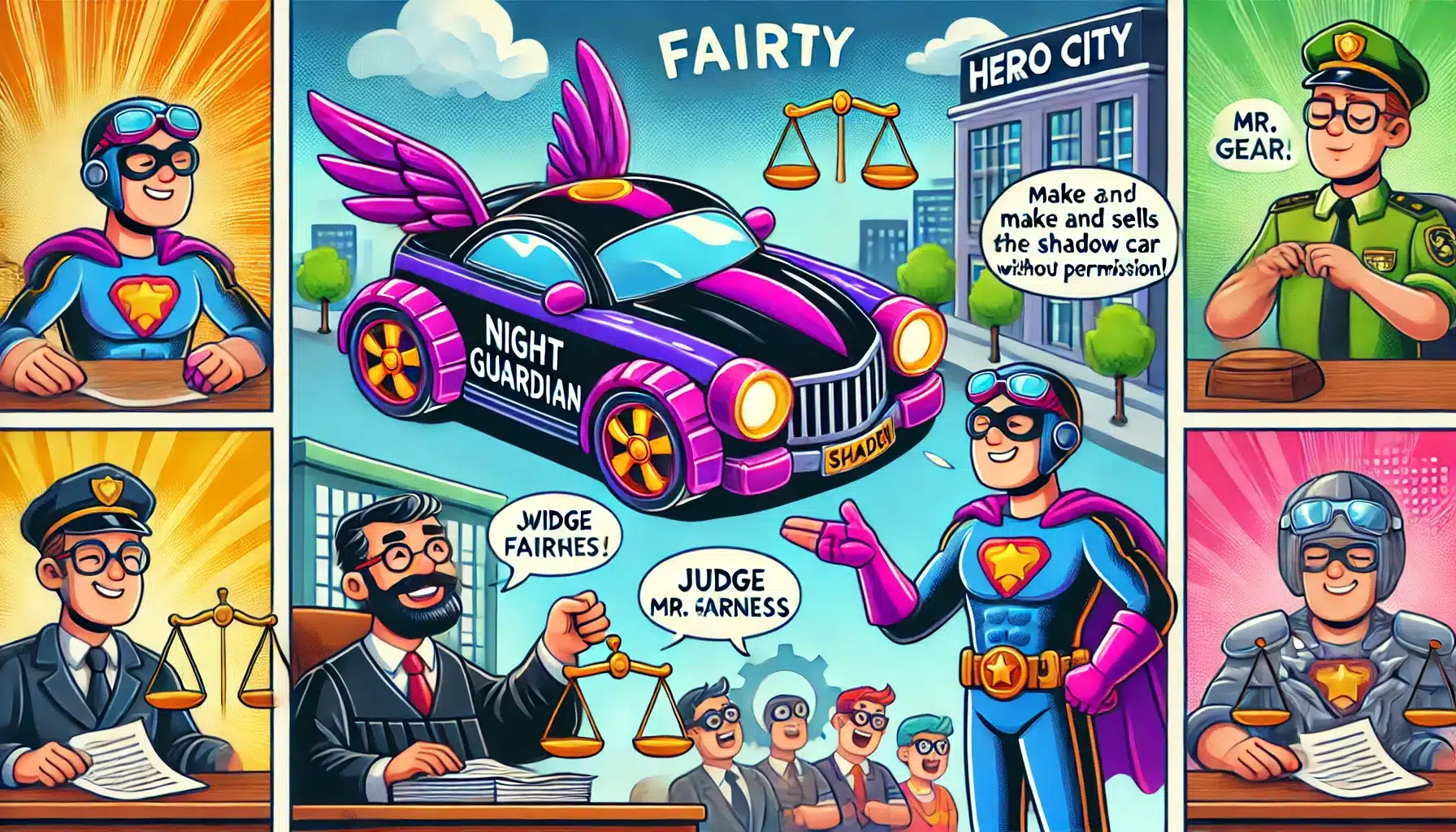In DC Comics v. Mark Towle, the Ninth Circuit ruled that the Batmobile, as a distinctive and recognizable character associated with Batman, is eligible for copyright protection. Despite design changes over time, the Batmobile maintained consistent traits such as bat-like features and high-tech eleme

Best way to automate statutory/referential drafting
“The case reaffirms the protection of distinctive characters under copyright law and clarifies that such protection extends to well-established characters with recognizable traits and attributes, even if their appearance evolves over time.”
Citation: 802 F.3d 1012, 9th Cir. 2015
Date of Judgment: 23rd September, 2015
Court: The United States Court of Appeals, Ninth Circuit
Bench: Ikuta (J)
Facts
- DC Comics (DC) is the publisher and copyright owner of Batman, a character first appearing in 1939. The Batmobile, introduced in 1941, is Batman’s iconic vehicle with varying designs over time but consistent in its high-tech and bat-like features.
- In 2011, DC Comics filed a lawsuit against Mark Towle, who operated a business called Garage Gotham, for manufacturing and selling replicas of the Batmobile from the 1966 show and the 1989 film. DC Comics claimed that Towle’s business infringed on their copyright and trademark, and constituted unfair competition.
- Towle argued that the Batmobile from the 1966 and 1989 productions was not covered by copyright and that DC Comics did not own the copyright for the Batmobile as depicted in those productions. He acknowledged that his replicas were based on the Batmobile from these productions, though they did not replicate every detail.
- The district court granted in part and denied in part DC’s motion for summary judgment, and also denied Towle’s cross-motion for summary judgment. Subsequently, the parties reached a joint stipulation for the district court to issue a judgment against Towle on the grounds of copyright infringement and other claims brought by DC Comics.
Decision of the Federal Court
The district court partially granted DC Comics’ motion for summary judgment while denying Towle’s cross-motion. The court determined that the Batmobile is a character entitled to copyright protection, as it is consistently identified as Batman’s personal vehicle with distinctive traits that have been maintained over time. DC Comics, as the holder of the copyright and merchandising rights for Batman, also holds the rights to the Batmobile. The court concluded that Towle infringed on DC’s copyright by manufacturing replicas of the Batmobile from the 1966 television series and the 1989 film. Additionally, the court found that Towle acted in bad faith by deliberately copying DC’s trademark to create an association between his replicas and the original productions.
Decision of the Court of Appeals
The court held that the Batmobile was eligible for copyright protection by meeting the three-part test. It possessed both physical and conceptual qualities, was clearly delineated, and was notably distinctive. As a result, the Ninth Circuit Court upheld the district court’s decision, granting summary judgment in favour of DC Comics and finding that Towle had infringed on DC’s copyright by creating replicas of the Batmobile.
Key legal issues discussed
1. Whether the Batmobile is a copyrightable character?
Yes
The Court applied the three-part test and held that, “First, because the Batmobile has appeared graphically in comic books, and as a three-dimensional car in television series and motion pictures, it has “physical as well as conceptual qualities,” and is thus not a mere literary character.”
“Second, the Batmobile is “sufficiently delineated” to be recognizable as the same character whenever it appears. As the district court determined, the Batmobile has maintained distinct physical and conceptual qualities since its first appearance in the comic books in 1941. In addition to its status as “a highly-interactive vehicle, equipped with high-tech gadgets and weapons used to aid Batman in fighting crime,” the Batmobile is almost always bat-like in appearance, with a bat-themed front end, bat wings extending from the top or back of the car, exaggerated fenders, a curved windshield, and bat emblems on the vehicle. This bat-like appearance has been a consistent theme throughout the comic books, television series, and motion picture, even though the precise nature of the bat-like characteristics have changed from time to time.
…Because the Batmobile, as it appears in the comic books as well as in the 1966 television show and 1989 motion picture, displays “consistent, identifiable character traits and attributes,” the second prong of the character analysis is met here.
Third, the Batmobile is “especially distinctive” and contains unique elements of expression. In addition to its status as Batman’s loyal bat-themed sidekick complete with the character traits and physical characteristics described above, the Batmobile also has its unique and highly recognizable name. It is not merely a stock character.
Accordingly, applying our three-part test, we conclude that the Batmobile is a character that qualifies for copyright protection.”
2. Whether DC’s exclusive copyright was infringed by Mark Towle?
Yes
The court determined that the Batmobile is entitled to copyright protection, even though its physical design has evolved over time, due to its integral association with Batman. The court reached this conclusion by applying the three-part test established in Halicki Films, LLC v. Sanderson Sales & Mktg.,[1] which assesses whether a character in comics, television, or film qualifies for copyright protection. This test includes:
- Physical and Intellectual Features: The character must possess both physical and intellectual or conceptual qualities. The Batmobile, with its high-tech design and bat-like features, fits this criterion.
- Consistent Identification: The character must be sufficiently well-defined to be recognizable as the same character across various depictions, even if its appearance changes. The Batmobile has been portrayed consistently across various media, maintaining identifiable traits.
- Distinctiveness: The character must be unique and exhibit expressive elements that differentiate it from stock characters. The Batmobile’s unique characteristics and its role as Batman’s vehicle make it a protectable character.
In this case, the court found that the Batmobile met these criteria. It has appeared in numerous comic books and other media as a three-dimensional vehicle, thus fulfilling the requirement for both physical and conceptual qualities. The Batmobile’s consistent recognition across different mediums, despite design changes, indicates it is “sufficiently delineated.” Its unique features and role in Batman’s persona make it “especially distinctive” and not merely a stock character. Consequently, the Batmobile qualifies for copyright protection.
Additionally, the versions of the Batmobile featured in the 1966 television show and the 1989 film are based on the Batmobile from DC’s comic books, which are protected by copyright. DC Comics, as the copyright holder, has exclusive rights, including the right to create derivative works. This means that third parties must obtain permission from DC Comics to create derivative works based on these designs.
The court noted that Towle was aware of the Batman property and its associated symbols and had intentionally copied these designs. His use of the name “Batmobile” for his replicas further indicated bad faith. As a result, Towle’s actions were found to infringe on DC’s copyright by replicating the Batmobile designs from the 1966 and 1989 adaptations for profit.
[1] 547 F.3d 1213, 1224 (9th Cir. 2008).


